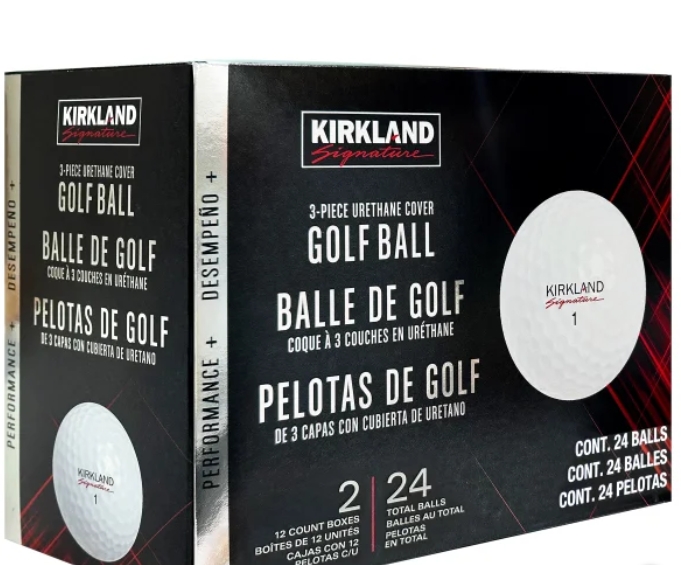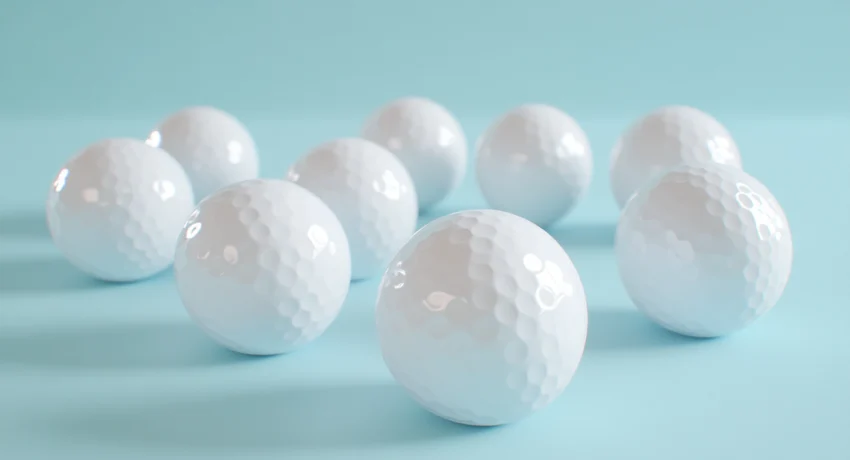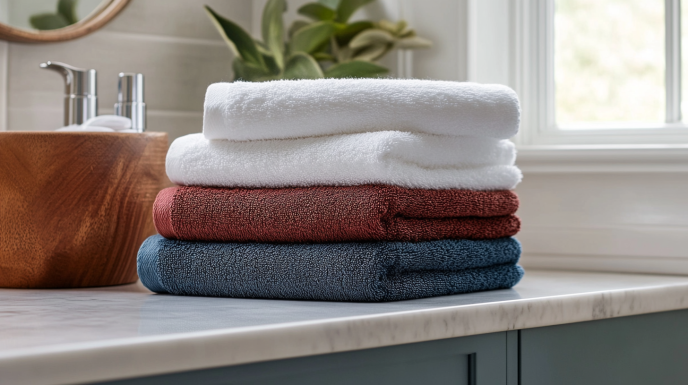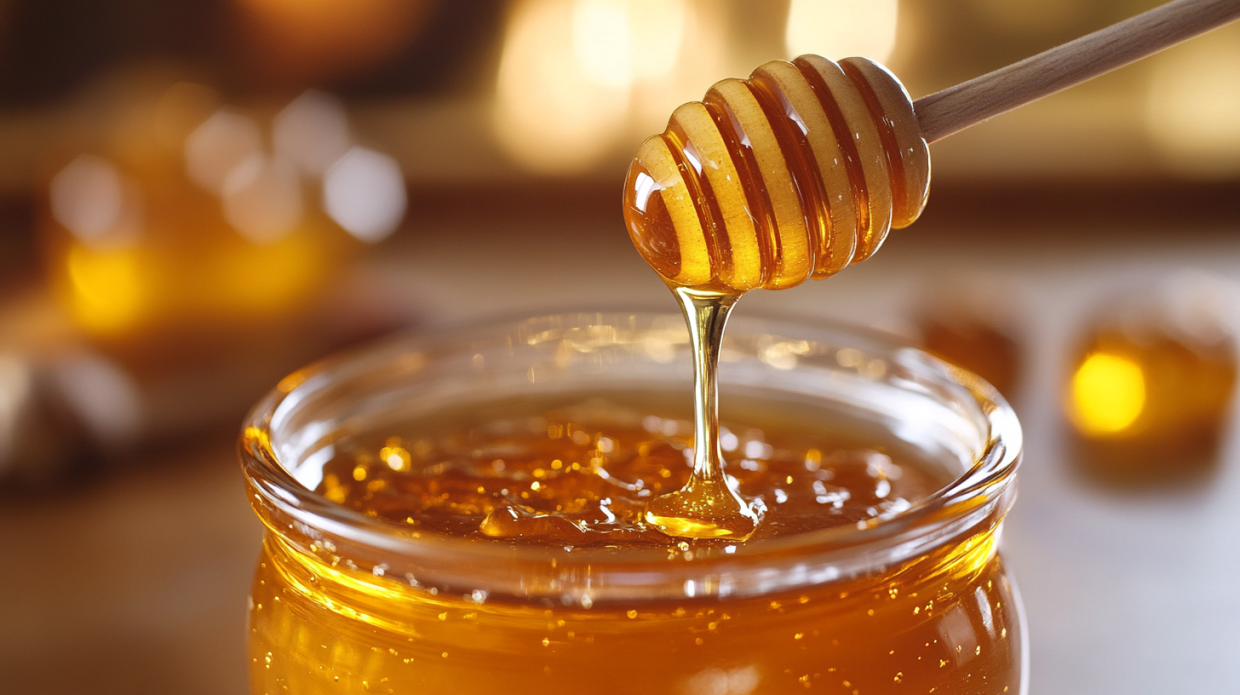
Kirkland Signature Golf Balls 2-dozen, White
- Limit 5 Per Membership
- 3-piece Urethane Cover Golf Ball
- 2-dozen, 24-count
- Conforms with USGA and R&A Rules
How Costco’s Golf Balls Became the Smart Player’s Secret Weapon
Golf is a game of precision, strategy, and sometimes, surprisingly savvy shopping decisions. Among the equipment choices that can make or break your round, few have created as much buzz in recent years as the humble yet mighty Kirkland Signature golf ball. These Costco-brand spheres have managed to do what seemed impossible: deliver professional-level performance at a fraction of the cost of premium brands. Let’s dive into the world of Kirkland golf balls to understand why they’ve become the most disruptive product in golf equipment in the last decade.
The Kirkland Phenomenon: How It All Started
The golf world was caught completely off guard in 2016 when Costco, better known for bulk paper towels and rotisserie chickens than sporting equipment, released their Kirkland Signature Four-Piece Urethane Cover golf ball. Priced at an almost unbelievable $29.99 for two dozen (just over $1.25 per ball), these balls quickly gained a cult following when players discovered they performed remarkably similar to premium balls costing two to three times as much.
The original “K-Sig” balls sold out almost instantly. Resellers were flipping them on eBay for inflated prices. Golf forums exploded with debates and testimonials. It wasn’t just the price that had golfers excited—independent testing showed these balls were legitimate performers, standing toe-to-toe with tour-level equipment from established manufacturers.
After some production and legal hurdles (including a fascinating patent dispute with Titleist’s parent company, Acushnet), Costco regrouped and continued refining their golf ball offerings. Today’s Kirkland Signature golf balls maintain that original promise: exceptional performance at an unmatched price point.
What Exactly Are Kirkland Golf Balls?
Kirkland Signature golf balls are Costco’s private label golf balls manufactured under their popular house brand. Currently, Costco offers two main variations:
- Kirkland Signature Three-Piece Urethane Cover Golf Ball – The current flagship model
- Kirkland Signature Performance+ Golf Ball – An alternative option occasionally available
Both models feature a urethane cover—a material typically found only in premium, tour-level golf balls. This is crucial because urethane provides the soft feel and spin control that better players demand, especially around the greens. Most budget balls use ionomer covers, which are more durable but lack the performance characteristics of urethane.
The three-piece construction includes a soft core, mantle layer, and urethane cover, engineered to provide an optimal combination of distance off the tee and control with approach shots and around the green. The dimple pattern has been specifically designed to provide consistent ball flight across a range of swing speeds.
Where Can You Buy Kirkland Golf Balls?
The exclusive home of Kirkland Signature products is, of course, Costco. You can find these golf balls at:
- Costco warehouse locations (availability may vary by location)
- Costco.com online store
- Occasionally through third-party sellers (though often at marked-up prices)
This limited distribution is both a strength and weakness of the Kirkland golf ball story. On one hand, you need a Costco membership ($60 annually for a standard membership) to purchase directly from the source. On the other hand, the membership requirement helps Costco maintain their remarkably low price point by eliminating middlemen and leveraging their massive buying power.
If you’re not a Costco member, you might find these balls through third-party sellers online, but be prepared to pay a premium above the already exceptional value at Costco’s direct pricing.
The Price Advantage: Breaking Down the Costs
The price-to-performance ratio of Kirkland golf balls is simply unmatched in the industry. Current pricing (as of 2025) for Kirkland Signature golf balls runs approximately:
- $24.99 for 24 balls (approximately $1.04 per ball)
- Often on sale for even less during periodic Costco promotions
Compare this to premium tour-level balls from major manufacturers:
- Titleist Pro V1/Pro V1x: $54.99-$59.99 per dozen ($4.58-$5.00 per ball)
- Callaway Chrome Soft: $49.99-$54.99 per dozen ($4.17-$4.58 per ball)
- TaylorMade TP5/TP5x: $49.99-$54.99 per dozen ($4.17-$4.58 per ball)
The math is startling—you’re getting similar performance for approximately 75-80% less cost. For the average golfer who loses several balls per round, this price difference can translate to hundreds of dollars saved over a season of golf.
This extreme value proposition has forced many traditional golf ball manufacturers to reconsider their pricing strategies and has given everyday golfers access to performance that was previously reserved for those willing to spend premium dollars.
Quality Analysis: How Good Are They Really?
The burning question for most golfers considering Kirkland balls is simple: do they actually perform? The consensus from independent testing, professional reviews, and everyday golfers is a resounding yes—with some caveats.
Strengths:
- Short Game Performance: The urethane cover provides excellent greenside spin and control, rivaling premium brands.
- Feel: Many players report a soft yet responsive feel, particularly on and around the greens.
- Distance: For most amateur golfers, distance performance is comparable to premium brands.
- Consistency: Ball-to-ball consistency is generally excellent, unlike some other budget options.
Potential Drawbacks:
- Driver Spin: Some players with higher swing speeds report slightly higher driver spin compared to premium models.
- Durability: The urethane cover, while offering great performance, may scuff more easily than ionomer-covered balls.
- Limited Options: Unlike major manufacturers offering multiple compression and flight options, Kirkland has limited variety.
The current Kirkland Signature three-piece ball has a compression rating of approximately 90, placing it in the medium-firm category. This makes it suitable for a wide range of players, though perhaps not ideal for those with very slow swing speeds who might benefit from a lower-compression option.
Technical Specifications: What’s Under the Cover?
Diving deeper into the technical aspects, Kirkland golf balls feature:
- Construction: Three-piece design (core, mantle, cover)
- Cover Material: 0.5mm urethane cover
- Dimple Pattern: 338-dimple design optimized for aerodynamic performance
- Compression: Approximately 90 (medium-firm)
- Core: Soft, high-energy rubber core designed for distance and feel
- Mantle Layer: Mid-layer designed to regulate energy transfer between core and cover
The materials used in Kirkland golf balls are similar to those found in premium offerings. The urethane cover is particularly noteworthy, as this material is typically reserved for tour-level balls due to its superior spin characteristics and feel, despite being more expensive to produce than ionomer or Surlyn covers.
The combination of these materials creates a ball that offers a good balance of distance off the tee and control around the greens. The three-piece construction provides more sophisticated performance than two-piece distance balls while maintaining good durability and consistency.
Performance Comparisons: Kirkland vs. Premium Brands
When directly comparing Kirkland Signature golf balls to industry standards like Titleist Pro V1 or Callaway Chrome Soft, several patterns emerge:
Distance Performance:
For most amateur golfers (swing speeds below 105 mph), distance differences are minimal—typically within 1-3 yards with driver. Higher swing speed players might see slightly less distance with Kirkland balls compared to the latest premium models, but the difference is rarely game-changing.
Spin Performance:
- Driver Spin: Kirkland balls tend to produce slightly higher spin off the driver than some premium models, which can reduce distance for high-spin players but may help lower-spin players achieve better flight.
- Iron Spin: Comparable to premium balls, providing good stopping power on approach shots.
- Short Game Spin: Very good greenside spin, within 10-15% of top premium models.
Feel Comparison:
The Kirkland balls offer a feel that most golfers would classify as “premium”—soft but not mushy, with good feedback on well-struck shots. In blind testing, many players struggle to distinguish between Kirkland and balls costing twice as much.
Ball Flight:
The Kirkland ball produces a moderately high ball flight with good stability in windy conditions. It may not offer the precise flight tuning of premium brands with multiple models (like Pro V1 vs. Pro V1x), but the standard flight works well for a broad range of players.
Suitability for Different Skill Levels
Are Kirkland golf balls right for your game? Let’s break it down by player type:
Beginners:
For new golfers, Kirkland balls offer excellent value. While absolute beginners who lose many balls might start with even cheaper options, the Kirkland ball’s performance-to-price ratio makes it an excellent choice as skills develop. The urethane cover provides feedback that can help developing players improve their short game feel.
Mid-Handicappers (10-20 handicap):
This may be the sweet spot for Kirkland balls. Players at this level can appreciate the performance benefits of a urethane-covered ball but might not justify the cost of premium brands, especially if they still lose several balls per round.
Low-Handicappers and Scratch Players:
Many single-digit handicappers have embraced Kirkland balls, finding that the performance differences compared to premium brands are minimal enough to be outweighed by the cost savings. However, players with very specific performance needs or high swing speeds might prefer the targeted performance of premium models.
Seniors and Players with Slower Swing Speeds:
The medium-firm compression of Kirkland balls works well for average swing speeds, but seniors or players with swing speeds below 85 mph might benefit more from a lower-compression ball that helps maximize distance.
Tournament Play and Official Status
One question that often arises is whether Kirkland golf balls are “tournament legal.” The answer is yes—Kirkland Signature golf balls conform to the Rules of Golf as established by the USGA and R&A. They appear on the official conforming ball lists and can be used in any amateur or professional competition.
Many recreational tournament players appreciate the combination of performance and value, knowing they can stock up on tournament-quality balls without breaking the bank. Even some mini-tour professionals have been spotted using Kirkland balls, though major OEMs dominate the PGA Tour where players receive equipment for free.
The Durability Question
Durability is one area where some players report Kirkland balls falling slightly short of premium competitors. The urethane cover, while excellent for performance, is inherently less durable than ionomer covers found on distance-focused balls.
A typical Kirkland ball can be expected to maintain peak performance for one full round of golf, with visible scuffing beginning to appear after significant wedge play or contact with cart paths and trees. This is comparable to other urethane-covered balls, though some premium models may use slightly more durable urethane formulations.
For most recreational players, the value proposition remains strong even with slightly reduced durability—the cost per round is still significantly lower than with premium options. Many players adopt a strategy of using a fresh ball each round while keeping scuffed balls for practice sessions.
Performance in Varying Conditions
How do Kirkland balls handle different playing conditions? Let’s explore:
Wet Conditions:
The urethane cover maintains reasonable grip in damp conditions, though like all golf balls, performance will decrease in very wet weather. The dimple pattern sheds water effectively, maintaining aerodynamic properties better than some budget alternatives.
Cold Weather:
In temperatures below 50°F, Kirkland balls, like most golf balls, will lose some resilience and distance. The effect is comparable to premium balls, with perhaps a slightly greater distance loss at very low temperatures due to core formulation differences.
Wind Performance:
The moderate spin characteristics and optimized dimple pattern provide good stability in windy conditions. While not specifically designed as a “wind ball,” most players find the flight predictable enough for challenging conditions.
Hot Weather:
Performance in hot conditions is excellent, with the core design providing good energy transfer at elevated temperatures. Some players report the Kirkland balls performing particularly well in hot weather relative to certain premium models.
The Value Proposition: Cost vs. Performance Analysis
The value proposition is where Kirkland golf balls truly shine. If we create a simple performance-to-price ratio, few products in the golf equipment world can compete.
Let’s say a premium ball offers 100% performance at 100% cost ($50 per dozen). If Kirkland balls deliver 90-95% of that performance at 25% of the cost, the value proposition becomes almost irresistible for budget-conscious golfers.
For a golfer playing 50 rounds per year and losing an average of 2 balls per round, the annual savings could exceed $300-400 while sacrificing very little in terms of on-course performance. Those savings could fund a new driver, several lessons with a PGA professional, or a weekend golf getaway.
The History and Manufacturing Story
The Kirkland golf ball story began around 2016 when Costco stunned the golf world with their original four-piece urethane ball. Initial speculation suggested these balls were manufactured by a major OEM’s excess capacity, but the truth appears more complex.
The current Kirkland balls are manufactured by SM Global, a South Korean company that produces golf balls for several brands. This international production is similar to how many “big name” golf balls are manufactured—contrary to popular belief, several major brands outsource production to specialized manufacturing facilities rather than making every component in-house.
Costco’s approach leverages their enormous purchasing power and direct-to-consumer model to eliminate typical markup and marketing costs. By ordering massive quantities and accepting lower margins than traditional golf companies, they’ve created a product that delivers exceptional value.
The development wasn’t without challenges—the original four-piece ball was subject to a legal dispute with Acushnet (Titleist’s parent company) regarding potential patent infringements. This led to a redesign and the current three-piece model, which maintains much of the performance while avoiding patent conflicts.
Player Reviews and Feedback
The online golf community has thoroughly embraced Kirkland balls, with thousands of reviews across major golf forums and retail sites. Common themes in these reviews include:
“I can’t believe these balls cost a third of what I was paying for [Premium Brand]. My handicap hasn’t changed a bit since switching.”
“The feel around the greens is what sold me. I was playing a $25/dozen ionomer ball before, and the difference in short game control with the Kirkland is night and day.”
“Are they identical to Pro V1s? No. Are they close enough that it doesn’t matter for a 14-handicapper like me? Absolutely.”
“I’ve played everything from Titleist to Srixon to TaylorMade, and the Kirkland balls hold their own. Sure, there are subtle differences, but nothing that justifies the price gap.”
The consensus from average golfers is overwhelmingly positive, with most reporting performance comparable to balls costing 2-3 times as much. More discerning low-handicap players may note small differences but often still opt for Kirkland balls based on the value proposition.
Packaging and Presentation
Kirkland golf balls come in a straightforward, no-frills package that reflects the value-focused philosophy. Each standard package contains 24 balls (two dozen), unlike the traditional dozen packaging of most golf ball brands.
The balls themselves feature a simple design with the Kirkland Signature logo and a number (typically 1-4 across the two dozen). They don’t offer the variety of colors, alignment aids, or personalization options available from some premium brands.
This minimalist approach contributes to the cost savings but may be a downside for players who prefer more customization options. For most value-conscious golfers, however, the performance benefits far outweigh the limited aesthetic options.
Conclusion: Are Kirkland Golf Balls Right For You?
After exploring every aspect of Kirkland Signature golf balls, the verdict is clear: these balls offer remarkable performance at an unbeatable price point. While not perfect for every player in every situation, they represent the most significant value in golf equipment available today.
For the vast majority of recreational golfers—from developing players to single-digit handicappers—Kirkland balls provide performance that rivals premium brands at a fraction of the cost. The urethane cover, three-piece construction, and consistent manufacturing create a ball that performs across all aspects of the game.
Players with very specific needs, extremely high swing speeds, or those who simply prefer the prestige of premium brands might still opt for traditional premium offerings. But for the golf consumer who prioritizes performance per dollar, it’s difficult to make a case against the Kirkland ball.
In a sport often criticized for its high costs and barriers to entry, Kirkland Signature golf balls represent a democratizing force—bringing tour-level performance to price points accessible to everyday players. Whether you’re looking to save money, maximize value, or simply curious about the phenomenon, these balls deserve a spot in your bag for at least a test round.
After all, in a game where the difference between a good and bad shot is measured in millimeters, it’s refreshing to find a product where the performance difference is minimal but the price difference is measured in dollars saved. And isn’t finding smart ways to enjoy more golf for less money a victory we can all celebrate?




